
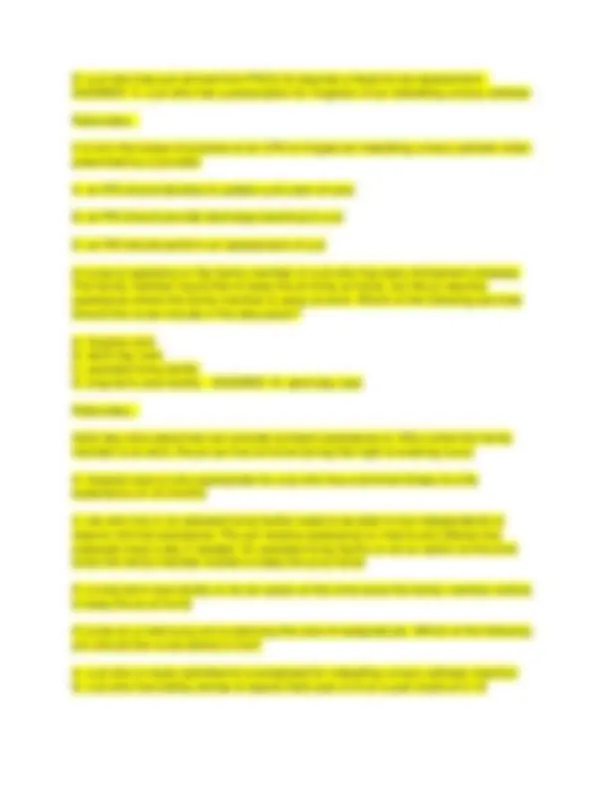
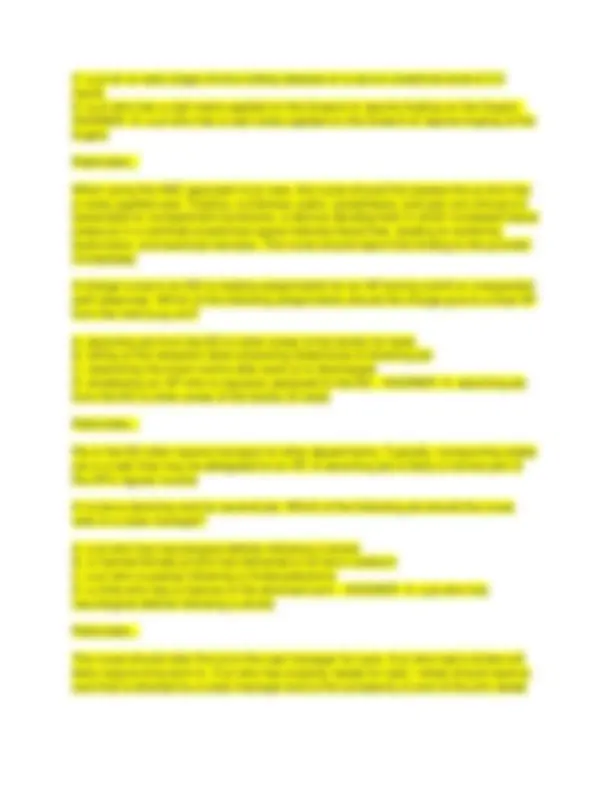
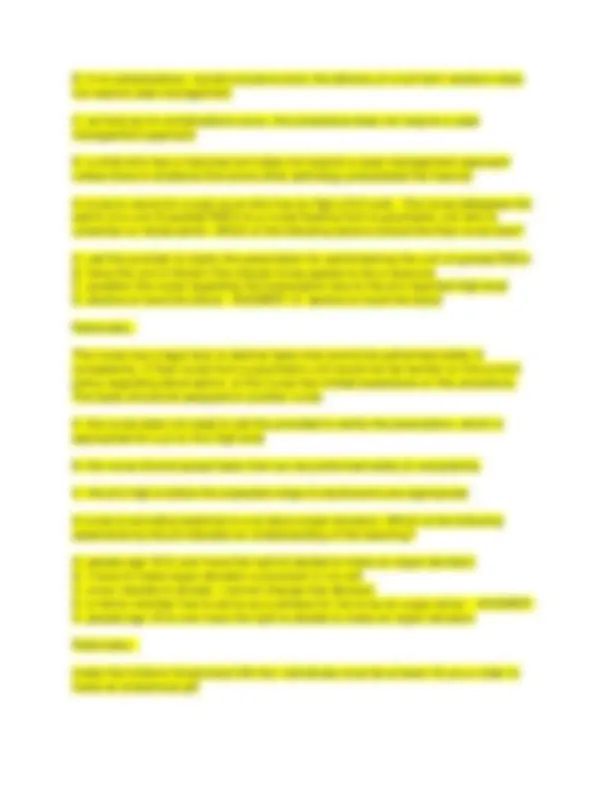
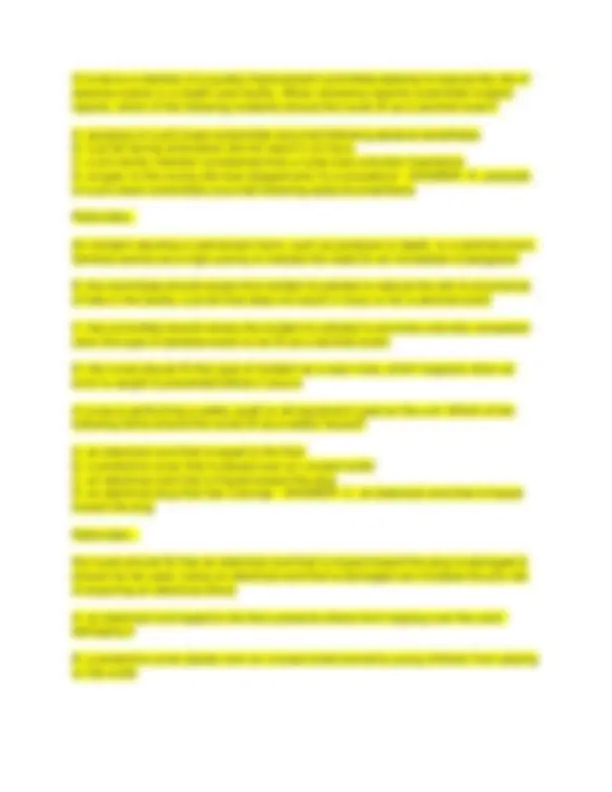
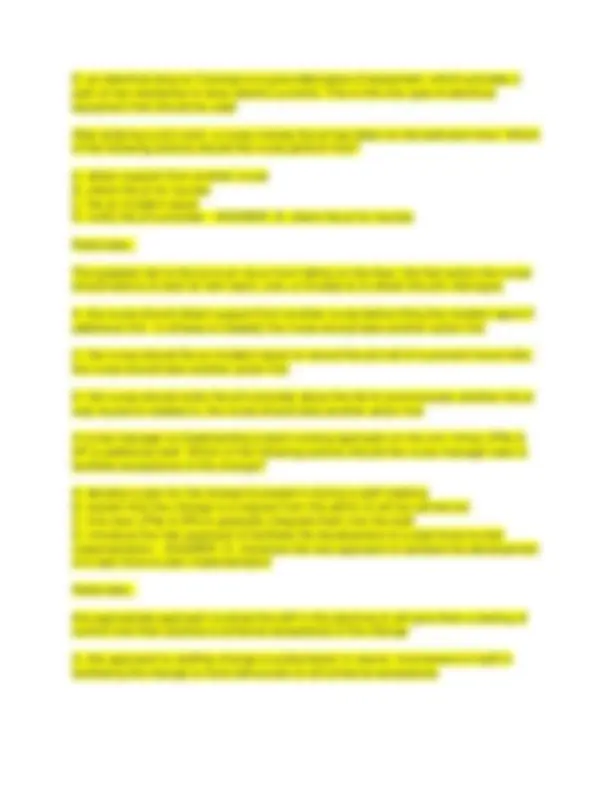
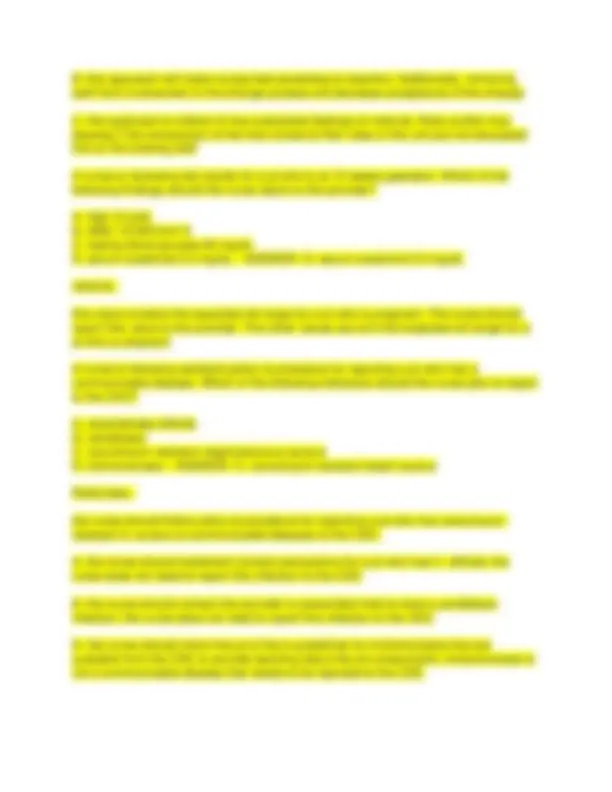
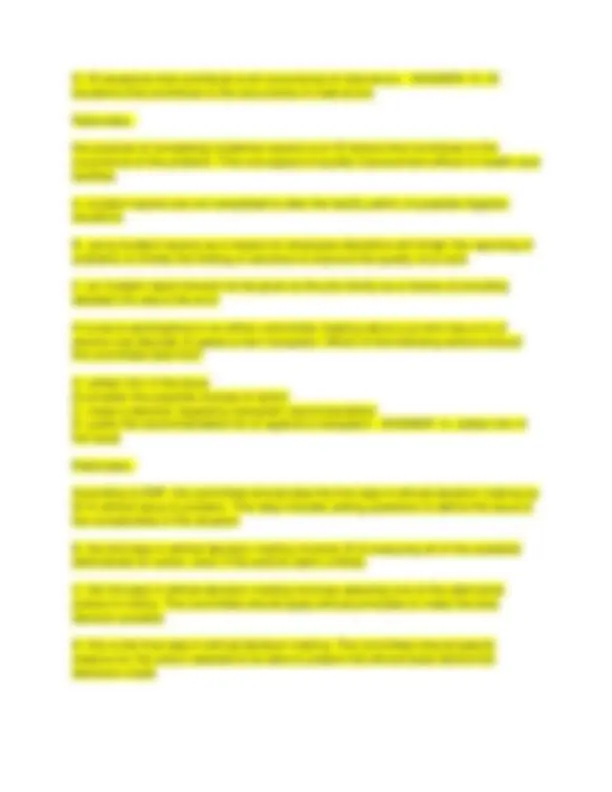
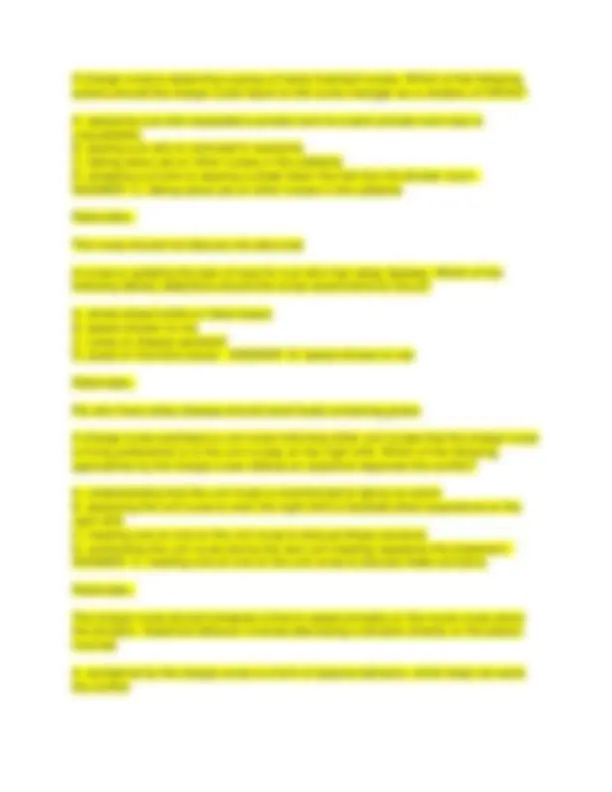
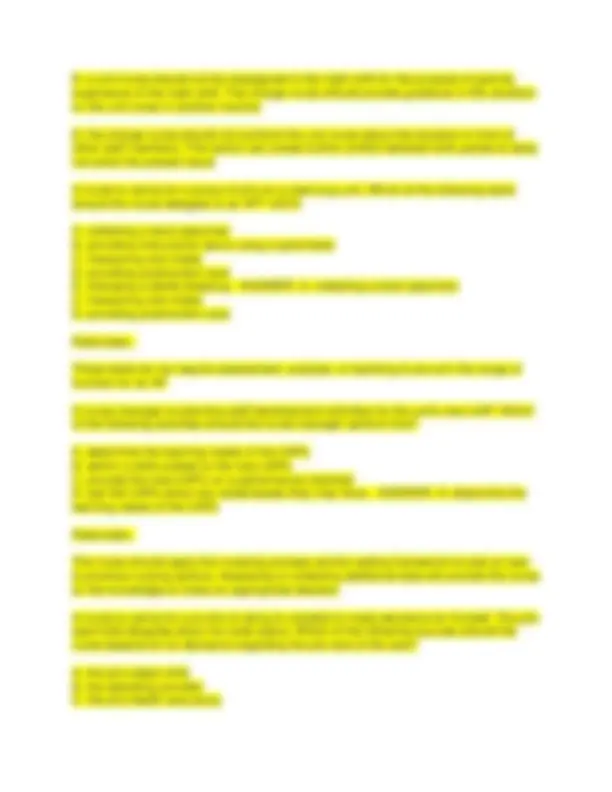
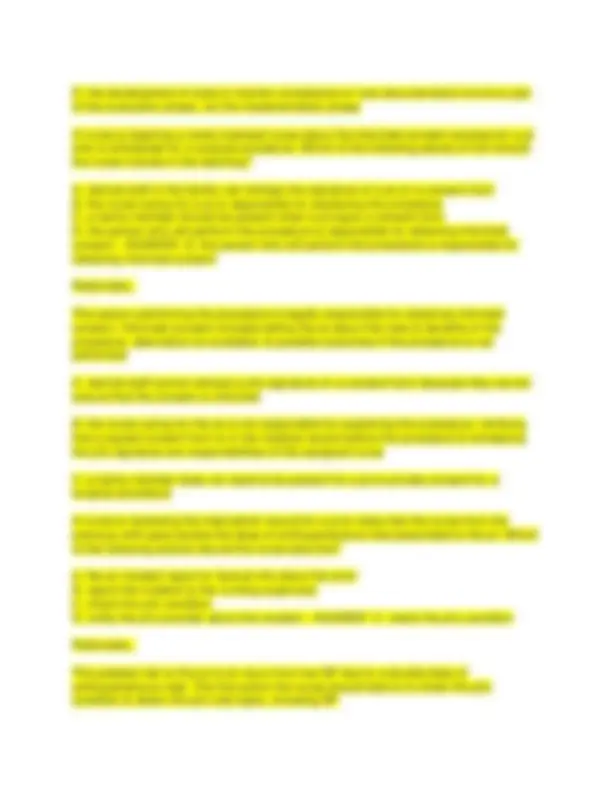
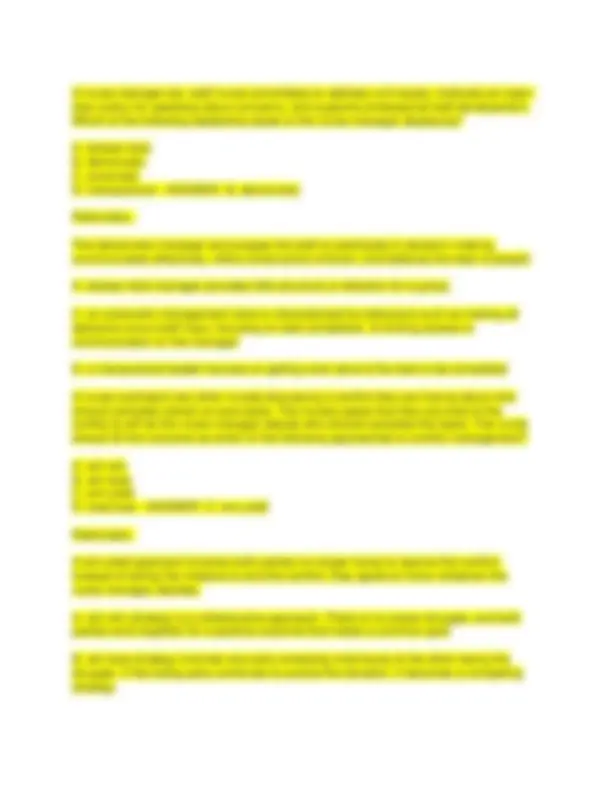
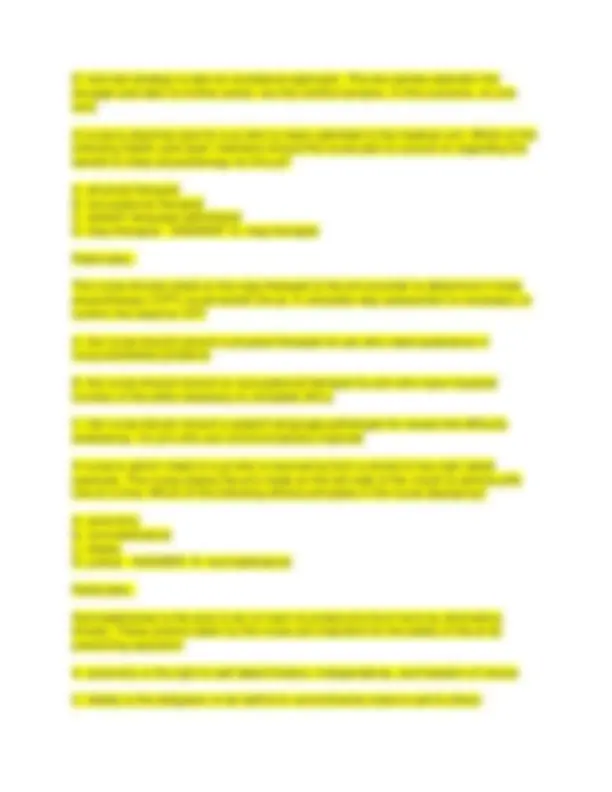
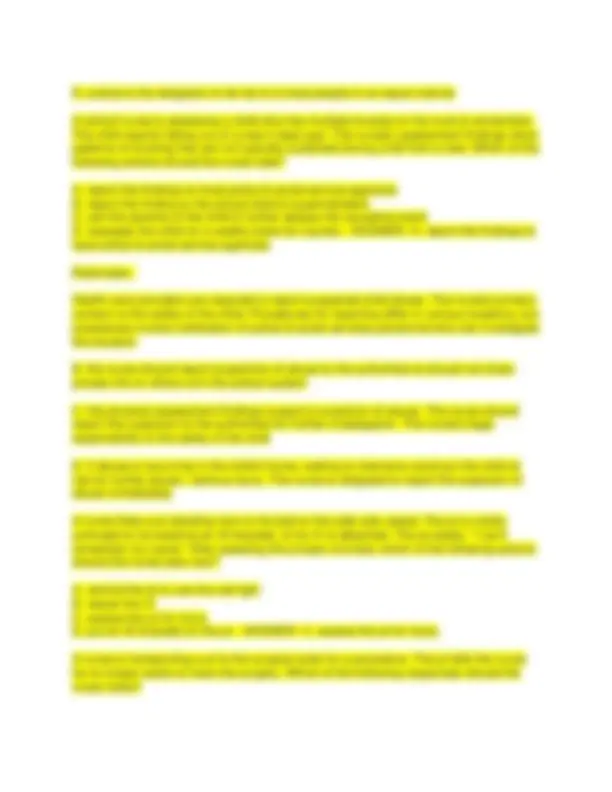
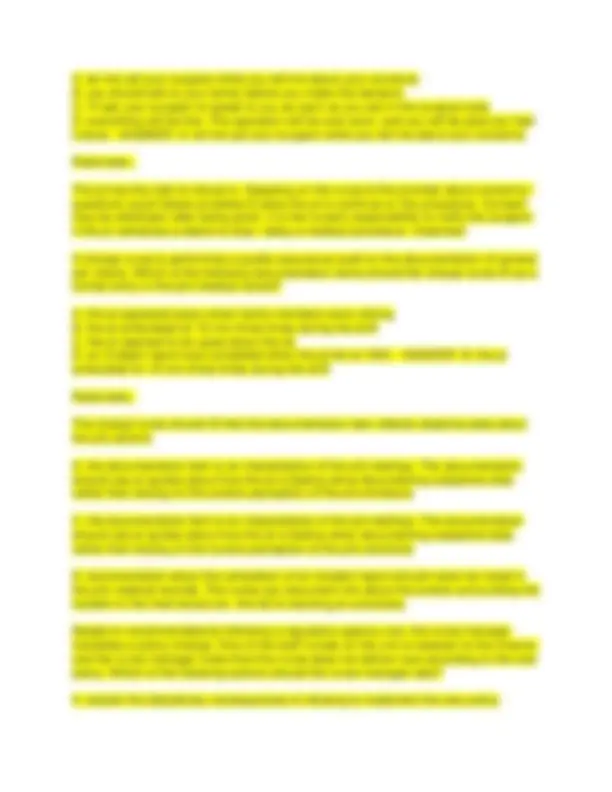
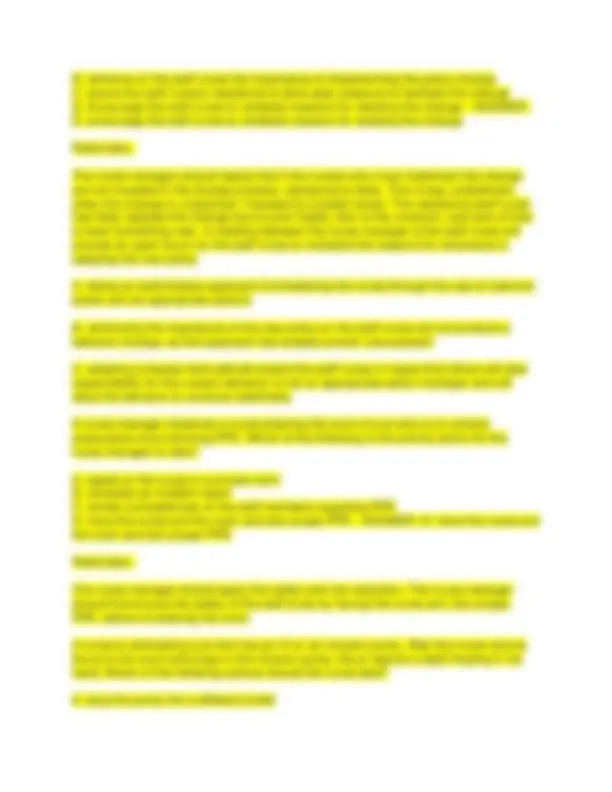
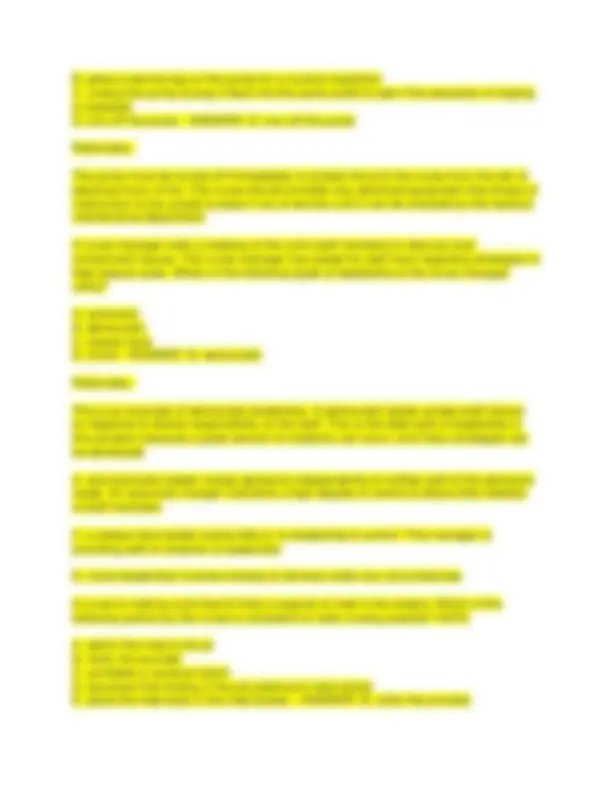
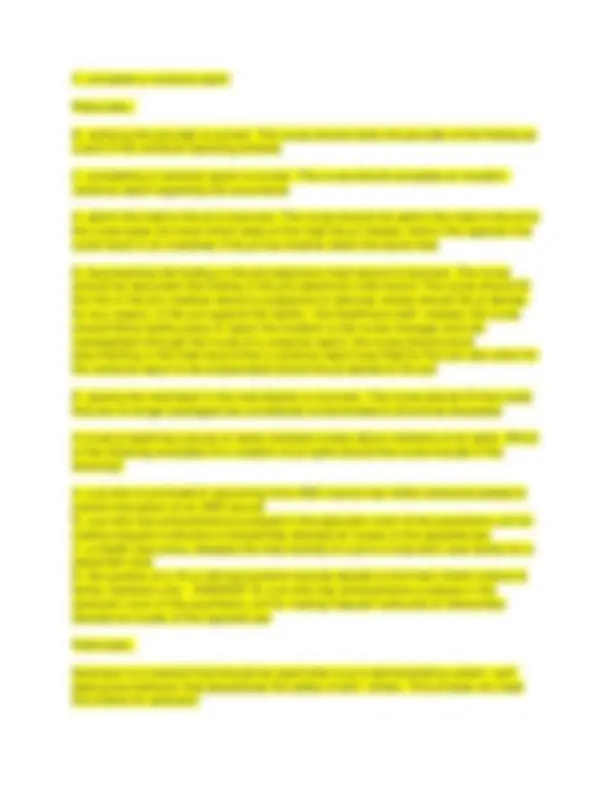
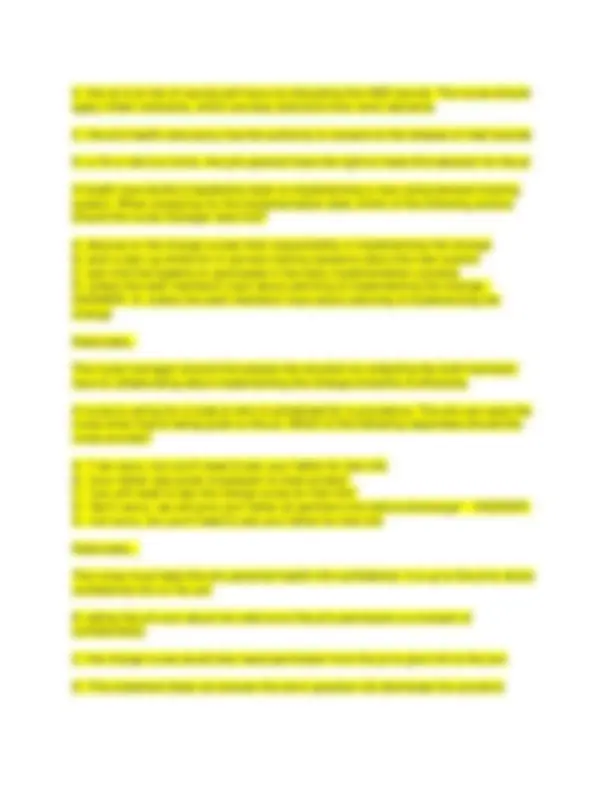
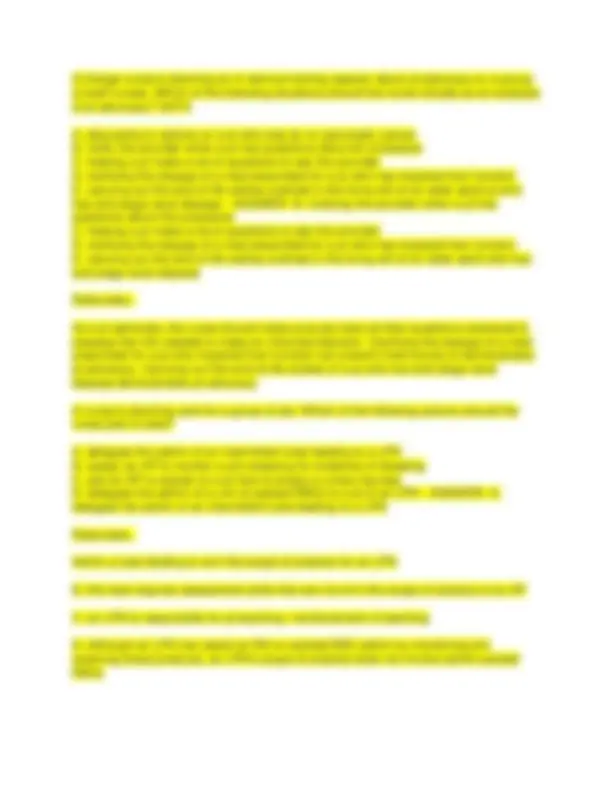
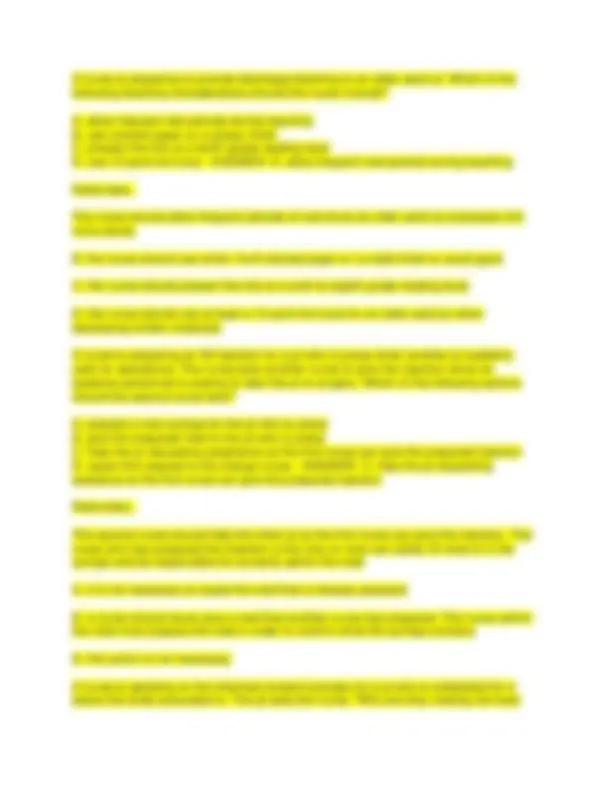
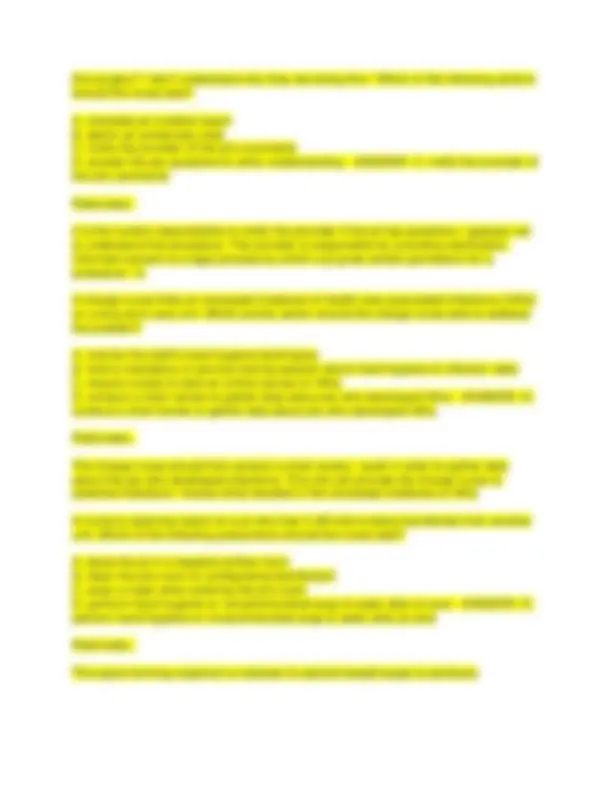
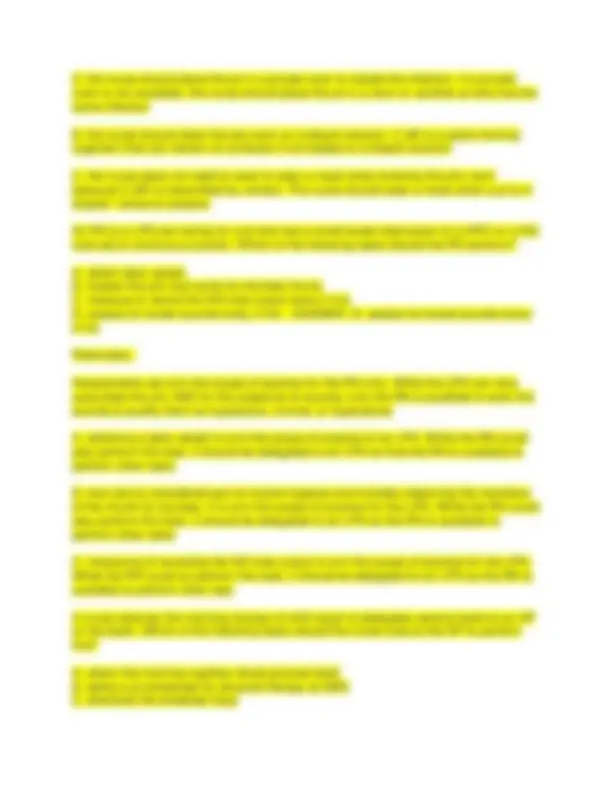
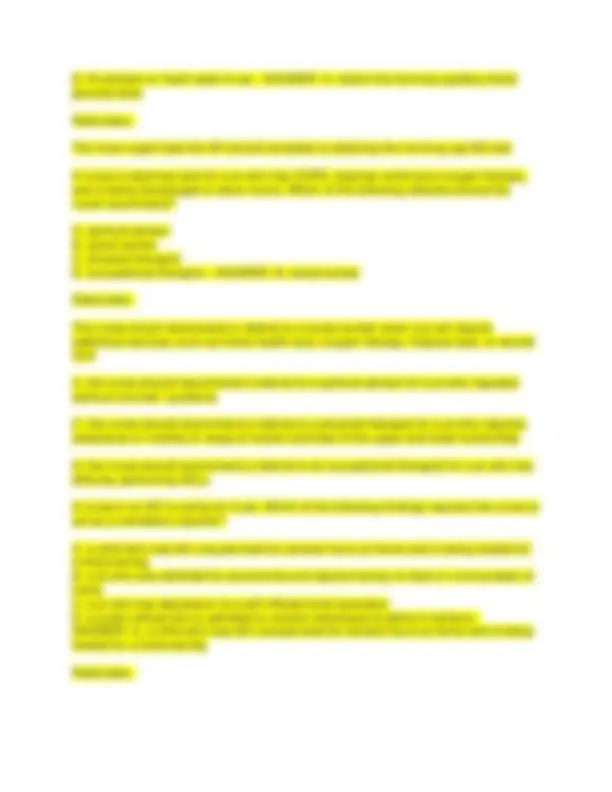
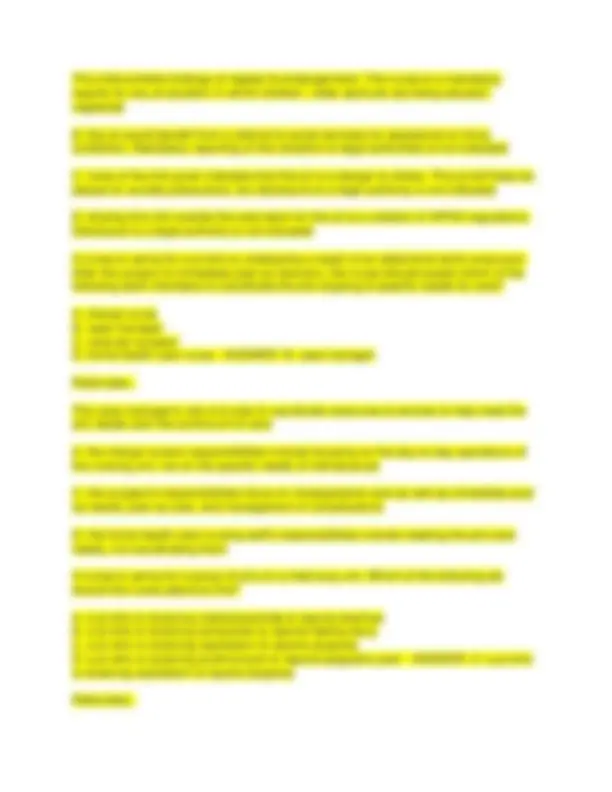
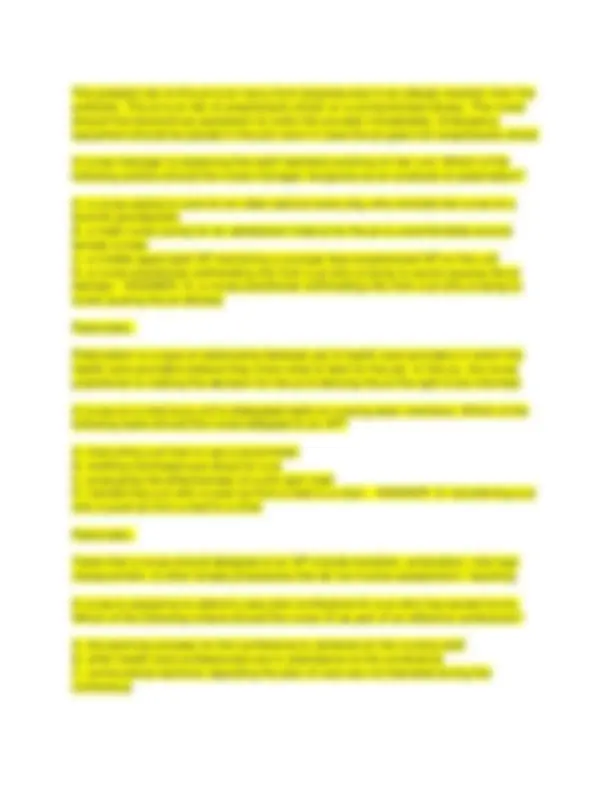
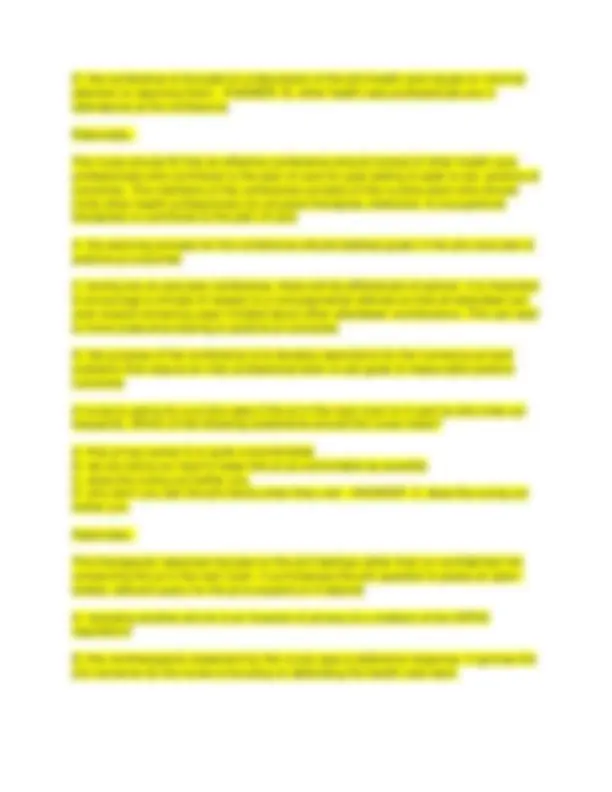
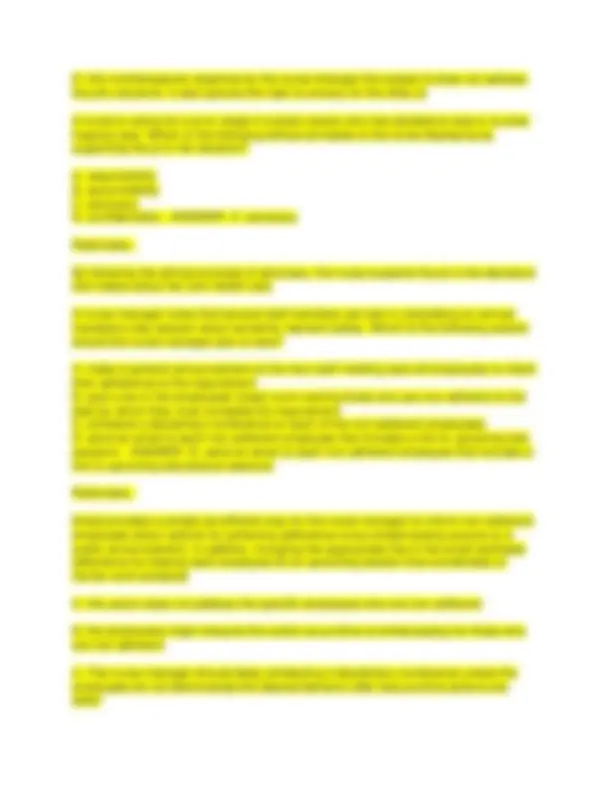
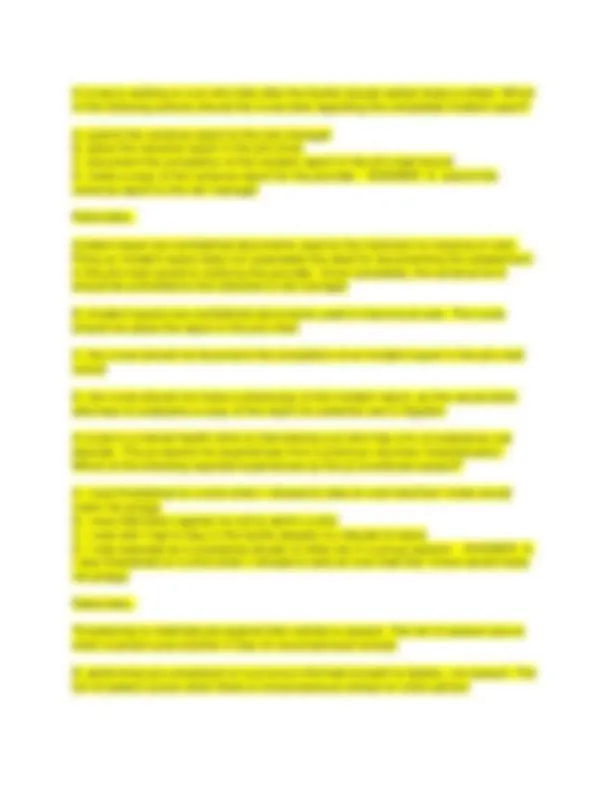
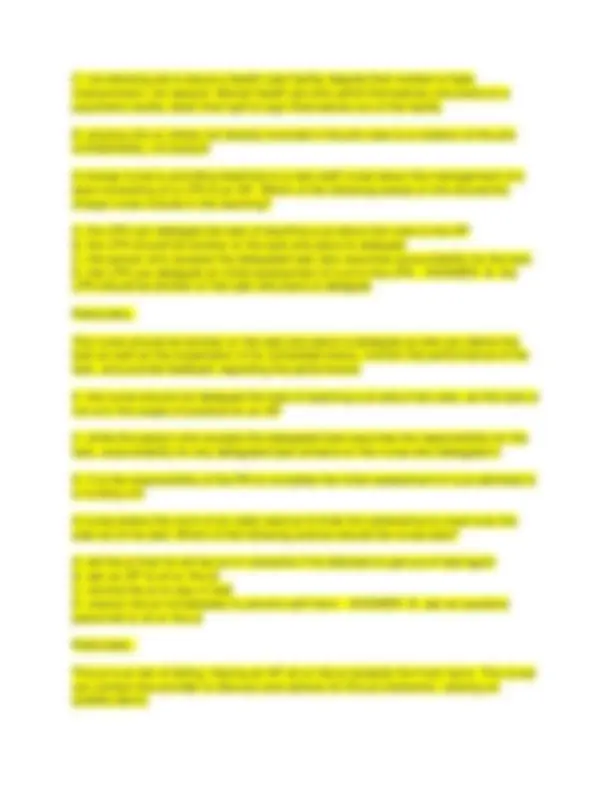
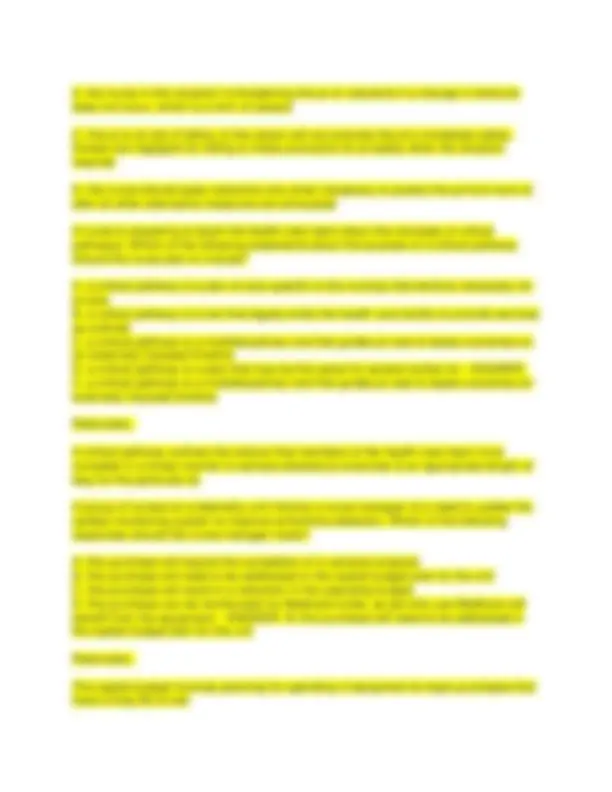
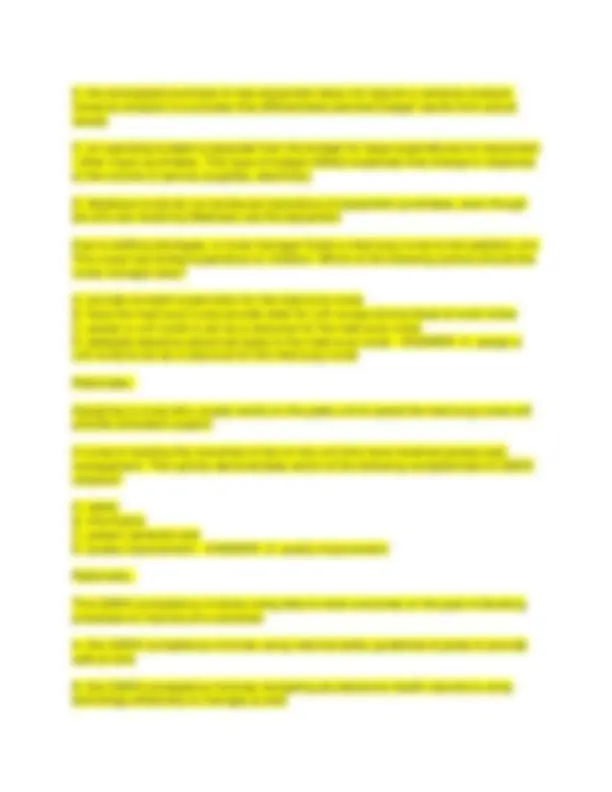
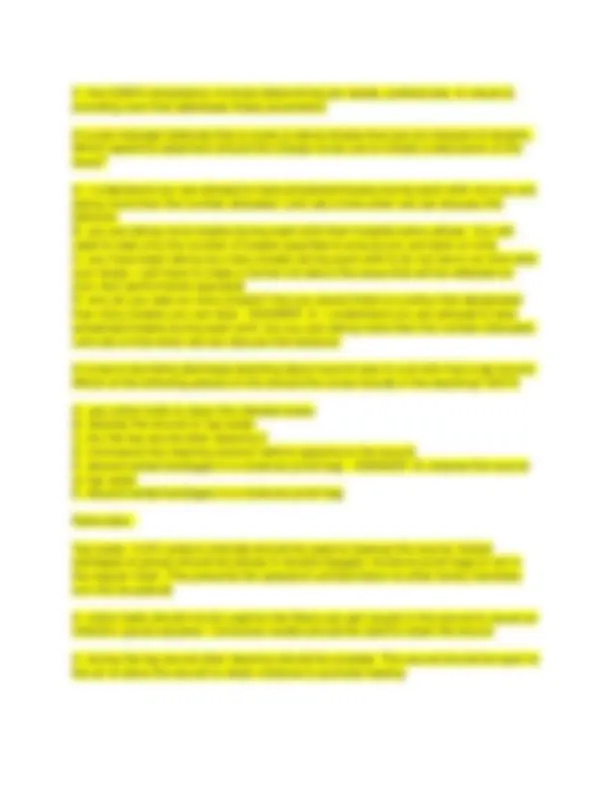
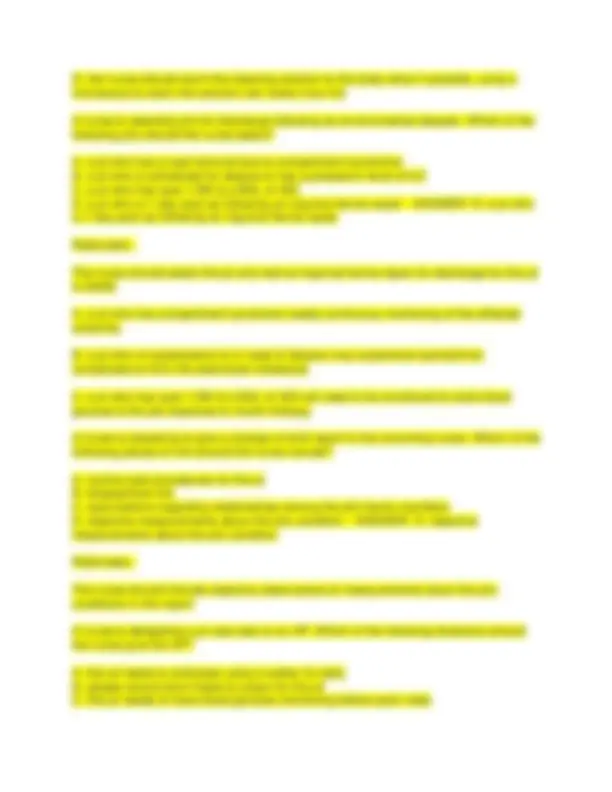
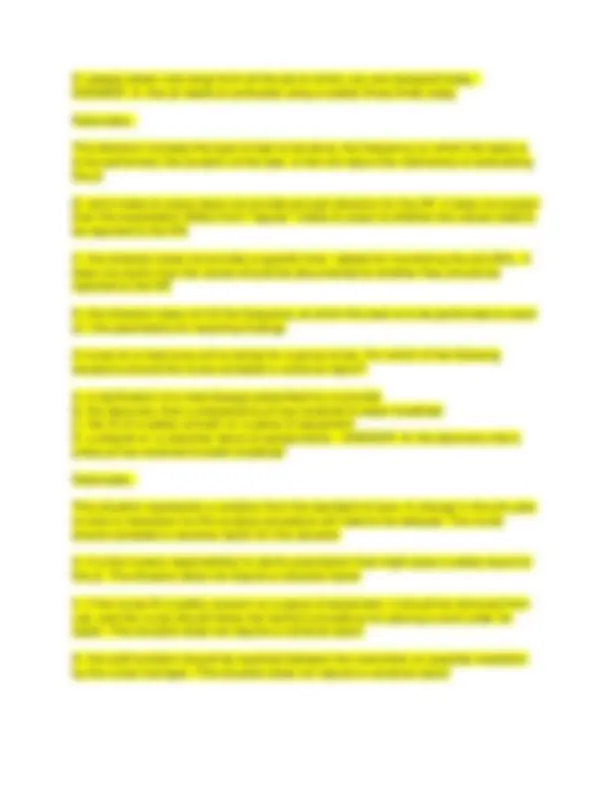
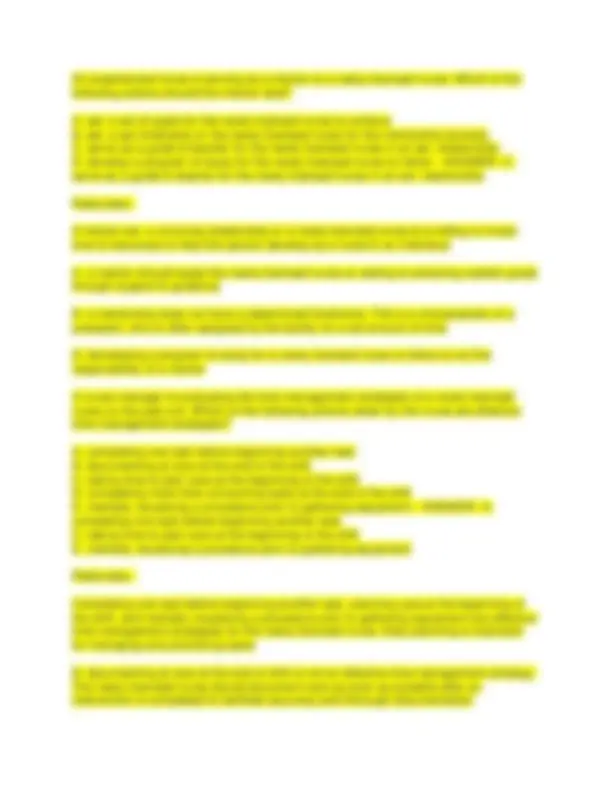
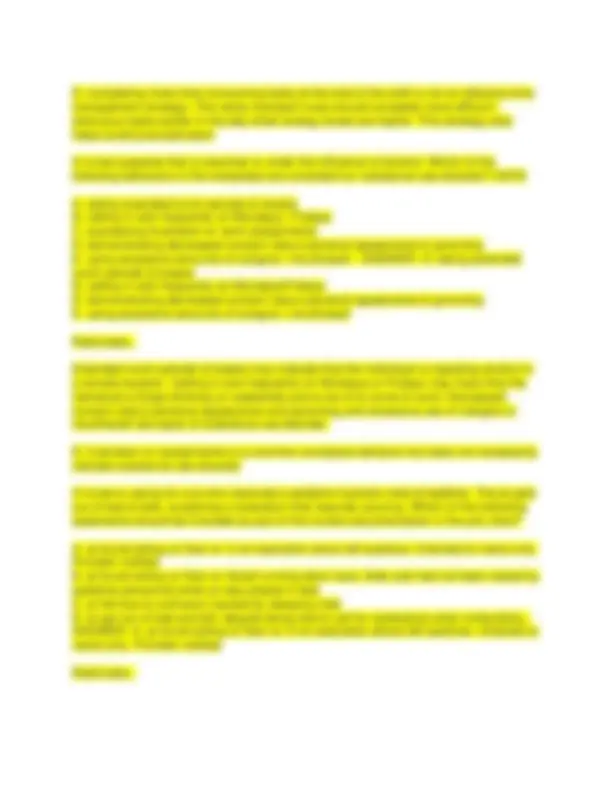
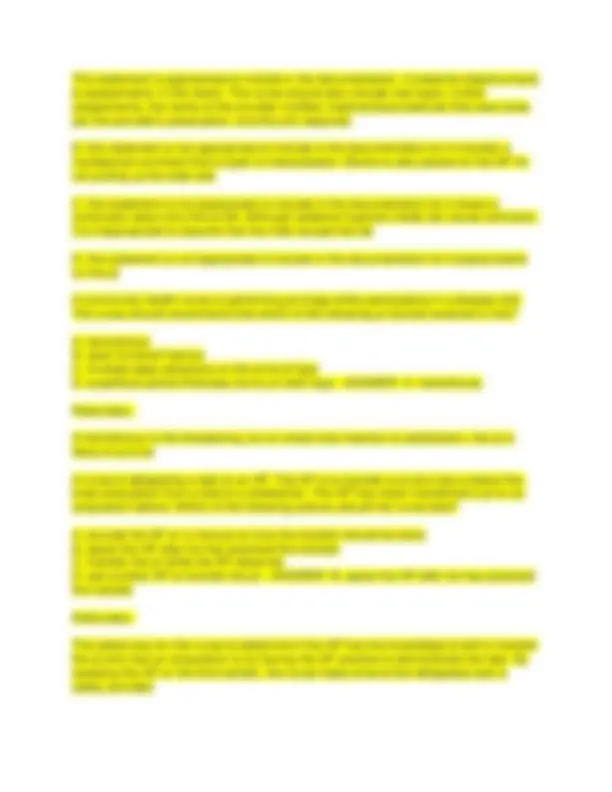




Study with the several resources on Docsity

Earn points by helping other students or get them with a premium plan


Prepare for your exams
Study with the several resources on Docsity

Earn points to download
Earn points by helping other students or get them with a premium plan
Community
Ask the community for help and clear up your study doubts
Discover the best universities in your country according to Docsity users
Free resources
Download our free guides on studying techniques, anxiety management strategies, and thesis advice from Docsity tutors
ATI LEADERSHIP PRACTICE QUESTIONS WITH CORRECT DETAILED ANSWERS..pdf
Typology: Exams
1 / 47

This page cannot be seen from the preview
Don't miss anything!








































A nurse is working w/ an assistive personnel (AP) in a long-term care facility. According to the 5 rights of delegation, which of the following determinations should the nurse make prior to assigning tasks? A. Whether the AP has consented to the performance of delegated tasks B. the pt's willingness to consent to care from the AP C. Whether the task can be more efficiently completed by the nurse D. The degree of supervision that the AP will required to complete the task - ANSWER- D. The degree of supervision that the AP will require to complete the task Rationales.... Successful delegation involves assigning the right task to the right person under the right circumstances. The person who will perform the task must be given adequate direction & specification regarding the amount of supervision that will be provided. The right communication of expectations & the right feedback about performance must also be supplied. A. The nurse does not have to obtain consent from the AP when delegating tasks w/in the scope of practice & job descriptions for APs B. Tasks that can be delegated to an AP do not require the pt's consent C. One of the barriers to successful delegation is the belief that no one can do a tasks as efficiently & effectively as the nurse. Due to the time constraints on nurses, tasks that can be done by an AP should be duly delegated A home health nurse is caring for a pt who asks about the purpose of a living will. Which of the following statements should the nurse include in the teaching? A. "It est. who will make health care decisions for the pt if the pt is not about to do so" B. "it allows the pt to express personal wishes regarding health care decisions" C. "It serves as an informed consent form for any procedure prescribed by a provider" D." It is only valid when a pt is lucid & able to make informed decisions independently" - ANSWER- B. It allows the pt to express personal wishes regarding health care decisions Rationales... A living will allows the pt to specify what aspects of care & tx are to be accepted / refused in the event that the pt can no longer communicate those decisions
A. this described a health care proxy document, which frequently accompanies a living will but is not considered a part of it C. A living will does not serve the same function as informed consent. Prior to any procedure, consent must always be obtained form the pt, a family member, or a designated health care proxy D. A living will is not valid / necessary when a pt is able to make informed health care decisions independently A nurse manager notes that a full-time nurse has been absent from work 6 times over the last 6 weeks. Using a nonpunitive approach, which of the following actions should the nurse manager take? A. verbally remind the employee about the facility's employment standards B. recommend that the employee review the facility's policy regarding absences C. Inform the employee in writing about the facilities employment policy D. ask the employee for a written action plan after discussing the reasons for these absences - ANSWER- A. verbally remind the employee about the facility's employment standards Rationales... Verbal admonishment is the first step in the disciplinary process for this type of infraction. The employee might not know or remember the existing standard, and a verbal reminder may be sufficient to change the employee's behavior B. Recommending that the employee reviews the policy does not ensure that the employee will read & fully understand the employment standards C. written admonishment is the second step in the disciplinary process for this type of infraction. If the employee fails to make a positive behavioral change after being verbally reminded by the manager about the facility's employment standards, the nurse manager should inform the employee writing D. this is an example of performance-deficiency coaching, which the nurse manager should use to correct unacceptable behaviors over time A charge nurse on a med surg unit is making assignments for the oncoming shift. Which of the following pts should the charge nurse assign to a LPN? A. a pt who requires an updated plan of care following a dx of cancer B. a pt who is postop following a total hip replacement & requires discharge teaching C. a pt who has a prescription for irrigation of an indwelling urinary catheter
C. a pt dx w/ early stage chronic kidney disease w/ a serum creatinine level of 2. mg/dL D. a pt who has a cast newly applied on the forearm & reports tingling on the fingers - ANSWER- D. a pt who has a cast newly applied on the forearm & reports tingling of the fingers Rationales... When using the ABC approach to pt care, the nurse should first assess the pt who has a newly applied cast. Tingling, numbness, pallor, paresthesia, and pain are clinical s/s associated w/ compartment syndrome, a serious development in which increased tissue pressure in a confined anatomical space reduces blood flow, leading to ischemia, dysfunction, and eventual necrosis. The nurse should report this finding to the provider immediately A charge nurse in an ED is making assignments for an AP during a shift w/ unexpected staff absences. Which of the following assignments should the charge give to a float AP from the med surg unit? A. escorting pts from the ED to other areas of the facility for tests B. sitting at the reception desk answering telephones & directing pts C. restocking the exam rooms after each pt is discharged D. shadowing an AP who is regularly assigned to the ED - ANSWER- A. escorting pts from the ED to other areas of the facility for tests Rationales... Pts in the ED often require transport to other departments. Typically, transporting stable pts is a task that may be delegated to an AP, & escorting pts is likely a normal part of the AP's regular routine A nurse is planning care for several pts. Which of the following pts should the nurse refer to a case manager? A. a pt who has neurological deficits following a stroke B. a married female pt who has delivered a full-term newborn C. a pt who is postop following a cholecystectomy D. a child who has a fracture of the dominant arm - ANSWER- A. a pt who has neurological deficits following a stroke Rationales... The nurse should refer this pt to the cast manager for care. A pt who had a stroke will likely require long-term tx. A pt who has ongoing needs for care / rehab should receive care that is directed by a case manager due to the complexity & cost of the pt's needs
B. if no complications / social concerns exist, the delivery of a full-term newborn does not require case management C. as long as no complications occur, this procedure does not require a case management approach D. a child who has a fractured arm does not require a case management approach unless there is evidence that some other pathology precipitated the fracture A nurse is caring for a post op pt who has an Hgb of 8.0 g/dL. The nurse delegates the admin of a unit of packed RBCs to a nurse floating from a psychiatric unit who is unfamiliar w/ blood admin. Which of the following actions should the float nurse take? A. call the provider to clarify the prescription for administering the unit of packed RBCs B. hang the unit of blood if the charge nurse agrees to be a resource C. question the nurse regarding this prescription due to the pt's reported Hgb level D. decline to hand the blood - ANSWER- D. decline to hand the blood Rationales.. The nurse has a legal duty to decline tasks that cannot be performed safely & competently. A float nurse from a psychiatric unit would not be familiar w/ the current policy regarding blood admin, & this nurse has limited experience w/ this procedure. The tasks should be assigned to another nurse A. the nurse does not need to call the provided to clarify the prescription, which is appropriate for a pt w/ this Hgb level B. the nurse should accept tasks that can be preformed safely & competently C. the pt's Hgb is below the expected range & transfusions are appropriate A nurse is providing teaching to a pt about organ donation. Which of the following statements by the pt indicates an understanding of the teaching? A. people age 18 & over have the right to decide to make an organ donation B. I have to make organ donation a provision in my will C. once I decide to donate, I cannot change that decision D. a family member has to serve as a witness for me to be an organ donor - ANSWER- A. people age 18 & over have the right to decide to make an organ donation Rationales... Under the Uniform Anatomical Gift Act, individuals must be at least 18 yrs or older to make an anatomical gift
D. tell the pt that someone will explain the procedure when it is time to begin - ANSWER- B. remind the pt that the doctor will insert a needle to get a sample of fluid from her spine Rationales... A signed consent form indicates that the provider informed the pt about the procedure & that at the time the pt understood what to expect. If the pt states she does not remember what to expect, the nurse should clarify any details the provider previously gave the pt. If the pt expresses a further lack of understanding or states that the provider did not inform her, the nurse should either notify the charge nurse or call the provider directly A. the signed consent form indicates that the provider explained the procedure to the pt previously. the nurse should have confirmed this when witnessing the consent C. although the nurse should provide this info, this reponse does not clarify what the provider will do once the pt is in position & directs the focus away from what the pt wants to know D. this response is nontherapeutic, rejects the pt's concern, & fails to ID the need for the nurse to take further action A nurse enters a pt's room & finds the pt lying on the floor next to the bed. Which of the following actions should the nurse take first? A. determine the cause of the incident B. check the pt for injuries C. call for assistance to get the pt back into bed D. complete an incident report - ANSWER- B. check the pt for injuries Rationales... The first action the nurse should take when using the nursing process is to assess the pt. The nurse should determine whether the pt has sustained any injuries from the fall & implement interventions to ensure the pt's safety & wellbeing A. the nurse should determine the cause of the incident to prevent further risks; however, there is another action the nurse should take first C. the nurse should call for assistance to place the pt back into beck, the pt should not be moved until an assessment by the nurse has been completed D. the nurse should complete an incident report w/ factual info regarding the incident, there is another action the nurse take first
A nurse is a member of a quality-improvement committee seeking to reduce the risk of adverse events in a health care facility. When reviewing recently submitted incident reports, which of the following incidents should the nurse ID as a sentinel event? A. paralysis of a pt's lower extremities occurred following epidural anesthesia B. a pt fall during ambulation did not result in pt injury C. a pt's family member complained that a nurse was culturally insensitive D. surgery to the wrong site was stopped prior to a procedure - ANSWER- A. paralysis of a pt's lower extremities occurred following epidural anesthesia Rationales.. An incident resulting in permanent harm, such as paralysis or death, is a sentinel event. Sentinel events are a high priority & indicate the need for an immediate investigation B. the committee should review this incident & policies to reduce the risk & occurrence of falls in the facility; a pt fall that does not result in injury is not a sentinel event C. the committee should review the incident & policies to promote culturally competent care; this type of adverse event is not ID as a sentinel event D. the nurse should ID this type of incident as a near-miss, which happens when an error is caught & prevented before it occurs A nurse is performing a safety audit on all equipment used on the unit. Which of the following items should the nurse ID as a safety hazard? A. an electrical cord that is taped to the floor B. a protective cover that is placed over an unused outlet C. an electrical cord that is frayed toward the plug D. an electrical plug that has 3 prongs - ANSWER- C. an electrical cord that is frayed toward the plug Rationales... the nurse should ID that an electrical cord that is frayed toward the plug is damaged & should not be used. Using an electrical cord that is damaged can increase the pt's risk of acquiring an electrical shock A. an electrical cord taped to the floor prevents others from tripping over the cord / damaging it B. a protective cover places over an unused outlet prevents young children from playing w/ the outlet
B. this approach will make nurses feel powerless & resentful. Additionally, removing staff from involvement in the change process will decrease acceptance of the change C. this approach is indirect & may precipitate feelings of mistrust. Role conflict may develop if the introduction of the new nurses & their roles in the unit are not discussed first w/ the existing staff A nurse is reviewing lab results for a pt who is at 12 weeks gestation. Which of the following findings should the nurse report to the provider? A. Hgb 12 g/dL B. WBC 15,000/mm^ C. fasting blood glucose 80 mg/dL D. serum creatinine 0.4 mg/dL - ANSWER- D. serum creatinine 0.5 mg/dL rational.. this value is below the expected ref range for a pt who is pregnant. The nurse should report this value to the provider. The other values are w/in the expected ref range for a pt who is pregnant A nurse is following standard policy & procedure for reporting a pt who has a communicable disease. Which of the following infections should the nurse plan to report to the CDC? A. clostridioides difficile B. candidiasis C. vancomycin-resistant staphylococcus aureus D. trichomoniasis - ANSWER- C. vancomycin-resistant staph aureus Rationales.. the nurse should follow policy & procedure for reporting a pt who has vancomycin- resistant S. aureus (a communicable disease) to the CDC. A. the nurse should implement contact precautions for a pt who has C. difficile; the nurse does not need to report this infection to the CDC B. the nurse should contact the provider to prescribed med to treat a candidiasis infection; the nurse does not need to report this infection to the CDC D. the nurse should inform the pt of the tx guidelines for trichomoniasis that are available from the CDC & provide teaching about the pt's prescription; trichomoniasis is not a communicable disease that needs to be reported to the CDC
A nurse is creating a plan of care for a pt who adheres to Kosher dietary laws. Which of the following food selections should the nurse recommend? A. backed pork chop B. cheeseburger C. ham & cheese omelet D. grilled salmon - ANSWER- D. grilled salmon Rationales.. The nurse should recommend grilled salmon for a pt who observes Kosher dietary laws. Grilled salmon is a fish w/ fins & scales, which can be consumed. Seafood w/ shells, such as lobster / crab is prohibited A nurse is assisting a provider w/ an amniotomy on a pt who is in labor. Which of the following is the priority nursing assessment following the procedure? A. color of amniotic fluid B. fetal heart rate C. uterine contraction pattern D. odor of amniotic fluid - ANSWER- B. fetal heart rate rationales.. The greatest risk to this pt is an injury from umbilical cord prolapse following artificial rupture of the membranes; the nurse should monitor the fetal heart rate for bradycardia, which can indicate an increased risk of umbilical cord prolapse A. the nurse should assess the color of the amniotic fluid for blood / meconium stool to check for fetal distress C. the nurse should assess the pt's uterine contraction pattern to determine if oxytocin should be given to stimulate contractions D. the nurse should assess the odor of the amniotic fluid to check for infection A charge nurse on a med surg unit is assigning pt care to the upcoming shift. Which of the following tasks should the nurse delegate to an AP? SATA A. performing colostomy care B. measuring a pt's intake & output C. interpreting a pt's lab values following surgery D. providing postmortem care to a pt E. checking nasogastric tube patency - ANSWER- B. measuring a pt's intake & output D. providing postmortem care to a pt
D. ID situations that contribute ot eh occurrence of med errors - ANSWER- D. ID situations that contribute to the occurrence of med errors Rationales.. the purpose of completing incidence reports is to ID factors that contribute to the occurrence of the problem. This one aspect of quality-improvement efforst in health care facilities A. incident reports are not completed to alter the facility admin of possible litigation situations B. using incident reports as a means for employee discipline will hinder the reporting of problems & inhibits the finding of solutions to improve the quality of pt care C. an incident report should not be given to the pt's family as a means of providing detailed info about the error A nurse is participating in an ethics committee meeting about a pt who has a hx of alcohol use disorder & needs a liver transplant. Which of the following actions should the committee take first? A. collect info r/t the issue B consider the possible choices of action C. make a decision regarding transplant recommendation D. justify the recommendation for or against a transplant - ANSWER- A. collect info r/t the issue Rationales.. According to EBP, the committee should take the first step in ethical decision-making by ID th ethical issue & problem. This step includes asking questions to define the issue & the complexities of the situation B. the 2nd step in ethical decision-making involves ID & analyzing all of the available alternatives for action, even if the actions seem unlikely C. the 3rd step in ethical decision-making involves selecting one of the alternative actions to follow. The committee should apply ethical principles to make the best decision possible D. this is the final step in ethical decision making. The committee should specify reasons for the action selected & be able to present the ethical basis behind the decisions made
A charge nurse is observing a group of newly licensed nurses. Which of the following actions should the charge nurse report to the nurse manager as a violation of HIPAA? A. assigning a pt who requested a private room to a semi-private room due to unavailability B. placing a pt who is confused in restraints C. talking about pts w/ other nurses in the cafeteria D. wheeling a pt who is wearing a sheet down the hall into the shower room - ANSWER- C. talking about pts w/ other nurses in the cafeteria Rationales.. The nurse should not discuss info about pts A nurse is updating the plan of care for a pt who has celiac disease. Which of the following dietary selections should the nurse recommend for the pt? A. whole-wheat tortilla w/ black beans B. baked chicken & rice C. turkey & cheese sandwich D. pasta w/ marinara sauce - ANSWER- B. baked chicken & rice Rationales.. Pts who have celiac disease should avoid foods containing gluten A charge nurse overhears a unit nurse informing other unit nurses that the charge nurse is fiving preferential tx to the unit nurses on the night shift. Which of the following approaches by the charge nurse reflects an assertive response this conflict? A. understanding that the unit nurse is misinformed & taking no action B. assigning the unit nurse to work the night shift to facilitate direct experience w/ the night shift C. meeting one on one w/ the unit nurse to discuss these concerns D. confronting the unit nurse during the next unit meeting regarding this statement - ANSWER- C. meeting one on one w/ the unit nurse to discuss these concerns Rationales.. The charge nurse should schedule a time to speak privately w/ the nurse nurse about the situation. Assertive behavior involves discussing a situation directly w/ the person involved A. avoidance by the charge nurse is a form of passive behavior, which does not solve the conflict
D. the facility's ethics committee - ANSWER- C. the pt's health care proxy Rationales.. If the pt connot speak for himself, the nurse should follow the directions of the pt's health care proxy, as this is the person the pt chose to make decisions under these circumstances A. if the pt does not have advance directives / has not named a health care proxy, the family may be asked to make end of life decisions B. the attending provider may offer suggestions on end of life care, but the pt or the pt's health care proxy directs treatment D. in the absence of advance directions, the facility's ethics committee may be called upon to intervene if a conflict occurs regarding end of life decisions A charge nurse is planning a department in-service training session about radioactive implants for a group of staff nurses. Which of the following points should the charge nurse include in the presentation? SATA A. pts should be places in a private room B. throw away an implant that has fallen out in the pt's trash can C. staff members should wear a dosimeter badge when caring for the pt D. pts should be on bed rest E. children over the age of yrs can visit if they are accompanied by an adult - ANSWER- A. pt's should be placed in a private room C. staff members should wear a dosimeter badge when caring for the pt D. pt's should be on bed rest Rationales.. Pt/s should be placed in a private room to avoid exposing other pt's to radiation from the implant. The nurse should follow the principles of time, distance, and shielding when working w/ a pt who is recieving internal radiation therapy. Health care providers should wear a dosimeter badge. This badge measures & records a staff member's amount of exposure to radiation. Pt's who have a radioactive implant should remain on bed rest while the implant is in place to prevent dislodgement. B. the nurse should pick up a radioactive implant that has fallen out w/ forceps & place it in a lead container E. children under the age of 16 yrs & women who are pregnant are prohibited from visiting a pt who has a radioactive implant
A nurse is discussing palliative care w/ the family of a pt who is terminally ill. Which of the following should the nurse include as the purpose of palliative care? A. curing the disease B. producing remission C. hastening death D. providing comfort measures - ANSWER- D. providing comfort measures Rationales... palliative care is an approach to care that promotes comfort for a pt who has a terminal dx & is not receiving aggressive therapy. Palliative care focuses on managing s/s of the disease, not on curing the disease A. curing the disease is only possible when specific tx is available. Palliative care is only an option when there is no possibility of a cure or when a pt w/ a terminal disaease has refused tx B. if a remission is possible w/ tx, this should be offered to the pt before palliative care. Palliative care in only an option when there is no possibility of a remission / when a pt who has terminal disease has refused tx C. Palliative care is not intended to prolong / hasten death. Instead, it seeks to provide comfort for a pt who is terminally ill A nurse is part of a facility committee charged w/ developing & implementing new documents forms. The nurse should recognize which of the following factors as a potential restraining force for implementing this change? A. approval of the forms by the nursing admin B. staff members' resistance to learning new forms of documentation C. recognition of the facility unit that completes the implementation first D. development of high-quality monitoring tools for compliance w/ new documentation - ANSWER- B. staff members' resistance to learning new forms of documentation Rationales.. Restraining forces impede change. Staff members' resistance to learning a new documentation system can be a restraining force. As a result, the committee must develop a plan for implementation that recognizes this threat. A. approval of the new documentation forms occurs as part of the process of development, and the committee should complete this step before implementation C. recognition serves as a driving force for implementation rather than a restraining force
A nurse manager est. staff nurse committees to address unit issues, institutes an open- door policy for speaking about concerns, and supports professional staff development. Which of the following leadership styles is this nurse manager displaying? A. laissez-faire B. democratic C. autocratic D. transactional - ANSWER- B. democratic Rationales.. The democratic manager encourages the staff to participate in decision-making, communicates effectively, offers constructive criticism, and believes the best of people A. laissez-faire manager provides little structure or direction for a group C. an autocratic management style is characterized by behaviors such as making all decisions w/out staff input, focusing on task completion, & limiting access to communication w/ the manager D. a transactional leader focuses on getting work done & the task to be completed A nurse overhears two other nurses discussing a conflict they are having about who should complete certain pt-care tasks. The nurses agree that they are tired of the conflict & will let the nurse manager decide who should complete the tasks. The nurse should ID this outcome as which of the following approaches to conflict management? A. win-win B. win-lose C. win-yield D. lose-lose - ANSWER- C. win-yield Rationales.. A win-yield approach involves both parties no longer trying to resolve the conflict. Instead of taking the initiative to end the conflict, they agree to honor whatever the nurse manager decides. A. win-win strategy is a collaborative approach. There is no power struggle, and both parties work together for a positive outcome that meets a common goal B. win-lose strategy involves one party emerging victoriously & the other losing the struggle. If the losing party continues to pursue the situation, it becomes a competing strategy
D. lost-lost strategy is also an avoidance approach. The two parties abandon the struggle and take no further action, but the conflict remains. In this outcome, no one wins A nurse is planning care for a pt who is newly admitted to the medical unit. Which of the following health care team members should the nurse plan to consult w/ regarding the benefit of chest physiotherapy for this pt? A. physical therapist B. occupational therapist C. speech-language pathologist D. resp therapist - ANSWER- D. resp therapist Rationales.. The nurse should collab w/ the resp therapist & the pt's provider to determine if chest physiotherapy (CPT) could benefit the pt. A complete resp assessment is necessary to confirm the need for CPT A. the nurse should consult a physical therapist for pts who need assistance r/t musculoskeletal problems B. the nurse should consult an occupational therapist for pt's who have impaired function of the skills necessary to complete ADLs C. the nurse should consult a speech-language pathologist for issues like difficulty swallowing / for pt's who are communicatively impaired A nurse is admin meds to a pt who is recovering from a stroke & has right-sided paralysis. The nurse places the pt's meds on the left side of the mouth & admins pills one at a time. Which of the following ethical principles in the nurse displaying? A. autonomy B. nonmaleficence C. fidelity D. justice - ANSWER- B. nonmaleficence Rationales.. Nonmaleficence is the duty to do no harm & protect pt's from harm by eliminating threats. These actions taken by the nurse are important for the safety of the pt by preventing aspiration A. autonomy is the right to self-determination, independence, and freedom of choice C. fidelity is the obligation to be faithful to commitments make to self & others